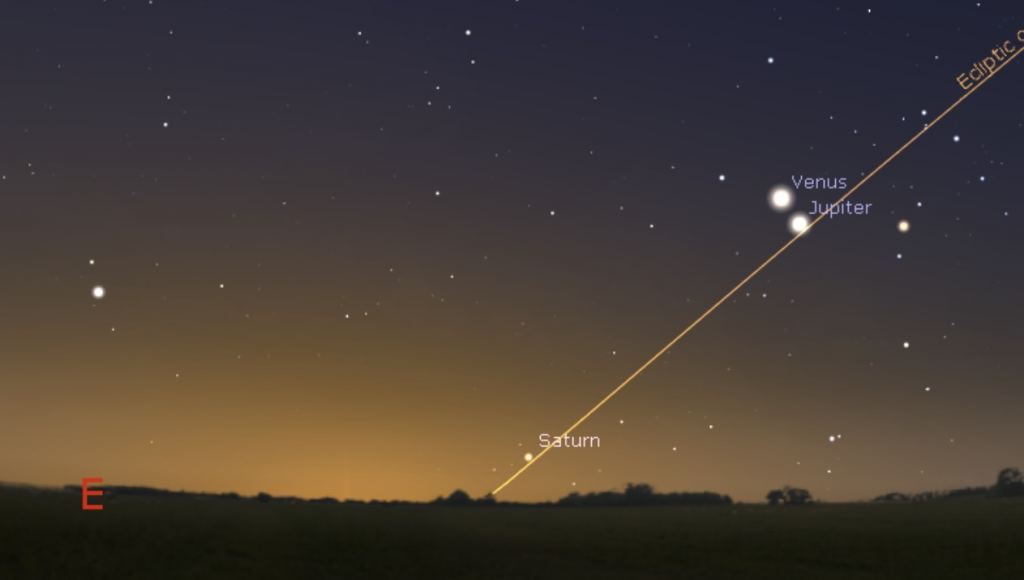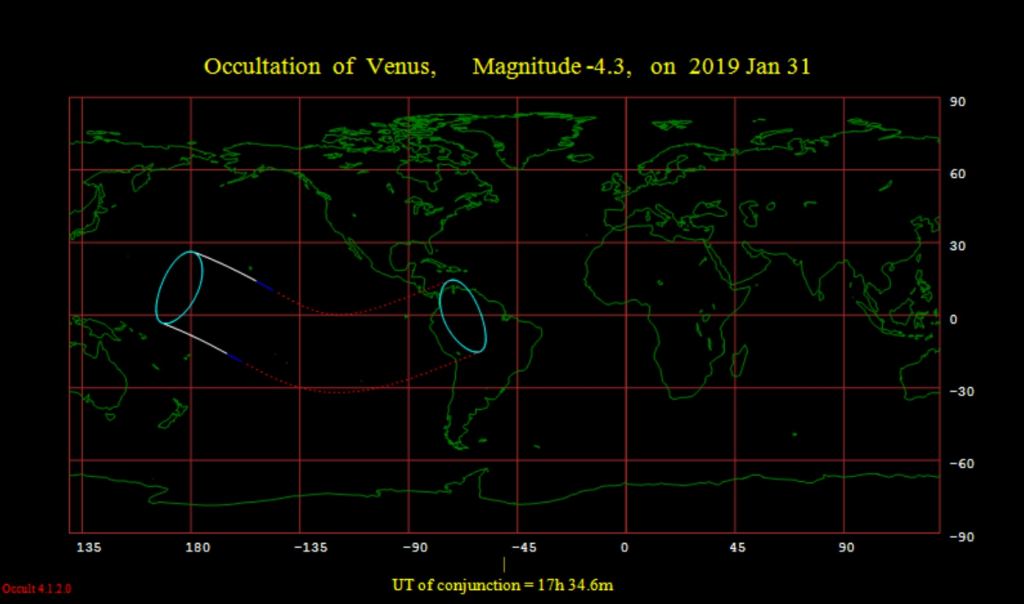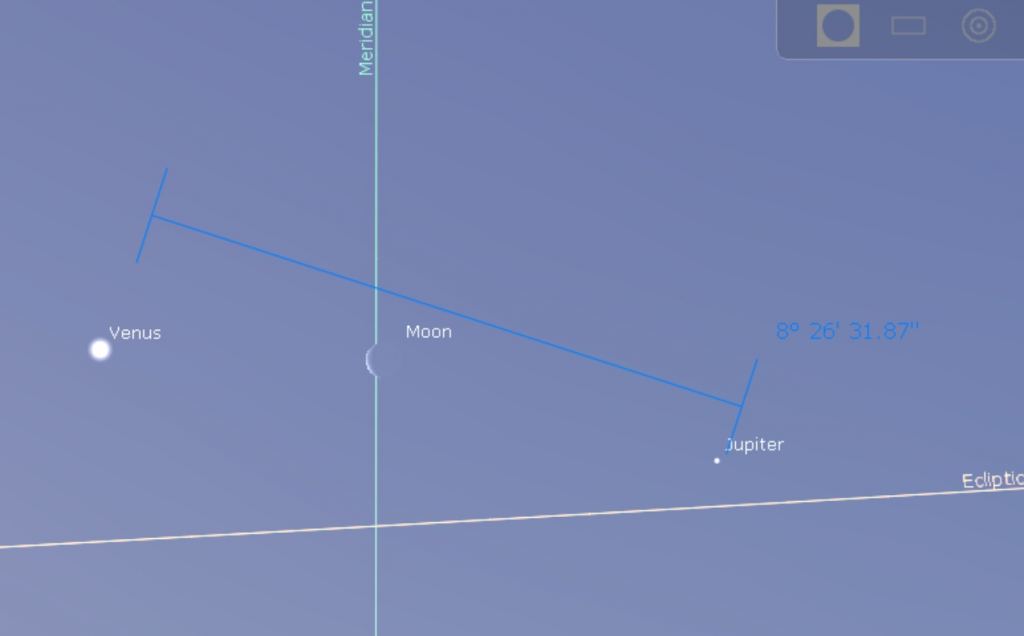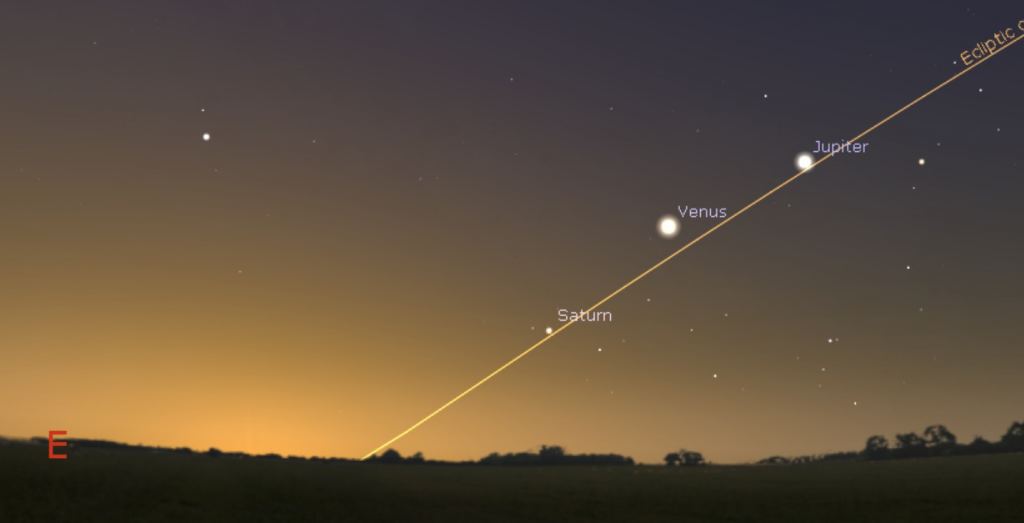You might be asking yourself: Where have all the planets gone?
With Mars past its epic opposition in 2018 and still lingering in the evening sky, all other naked eye planets are loitering in the early dawn for January 2019. Sure, it’s cold outside this month for folks up north, but January dawn skies offer early risers an amazing view, as Jupiter closes in on brilliant Venus for a close conjunction on the morning of January 22nd.
The conjunction: This month’s conjunction is one of the wider groupings for the pair for this decade: at their closest, Venus passes 144.4 arcminutes (almost two and half degrees, or the span of five Full Moons) from Jupiter at ~12:00 Universal Time (UT) on the 22nd. These sorts of passages of the two brightest planets in the sky happen roughly once a year… except for 2019, which features two, including a closer 84.3 arcminute pass on November 24th. That’s the final one for this decade, as 2020 (like 2018) is devoid of close Jupiter-Venus conjunctions.

Of course, this close pass is an illusion, a product of our Earthbound perspective. Venus is interior to the Earth’s orbit around the Sun and only 0.798 Astronomical Units (AU) distant this month (that’s 150 million kilometers or just over eight light-minutes away), while Jupiter is 5.979 AU or 894 million kilometers or 50 light-minutes away.
Fresh off of greatest elongation 47 degrees west of the Sun on January 6th, Venus still shines at a dazzling magnitude -4.5 during mid-month, bright enough to cast a shadow across freshly fallen snow. Compare that to Jupiter’s still respectable -1.8 magnitude intensity, about 16 times fainter. At the eyepiece, Venus displays a 58% percent illuminated disk 21 arcseconds across, versus Jupiter’s growing 33 arcsecond disk.
Enter the Moon
The waning gibbous is also Moon fresh off of next week’s total lunar eclipse, and joins the action on January 30th through February 1st. The Moon actually occults (passes in front of) Venus for the central Pacific region on the morning of January 31st.

This is also a great time for one of our favorite pursuits: daytime planet-spotting. Venus is actually pretty easy to spot in the daytime… if you know exactly where to look for it. The main challenge is contrast, and nabbing the brilliant tiny diamond of Venus against the featureless blue sky. Though the Moon actually has a much lower surface reflectivity (known as albedo) than Venus, it’s also much easier to spot in the daytime sky, owing to its larger apparent size.

But wait, there’s more. The planet Saturn is fresh off of solar conjunction on the far side of the Sun on January 2nd, and the three planets form a nearly straight line trio of Saturn-Venus-Jupiter on the morning of February 6th. Venus then goes on to pass just 1.1 degrees north of Saturn on the morning of February 18th.

Follow that giant planet though 2019, as it reaches quadrature 90 degrees west of the Sun on March 14th, and opposition for 2019 on June 11th.
Meanwhile, Venus begins to sink into the dawn through northern hemisphere Spring, reaching superior solar conjunction on August 14th on the solar farside and reemerging in the dusk in late Fall 2019 as it heads towards a greatest elongation 46 degrees east of the Sun on March 24th, 2020. This also sets us up for another Saturn-Venus-Jupiter grouping at dusk in December 2019. Onwards into 2020 and the last year of the decade, Venus also greets the Pleiades for the first time since 2012, following the 8-year cycle of Venus apparitions (that is, 13 orbits of Venus very nearly equals 8 orbits of the Earth).
Such is the clockwork order of the Universe. Though Jupiter and Venus pair up lots, a simultaneous occultation of the pair—or any two bright stars and planets—is extremely rare. If you made the journey to Ascension Island in the Atlantic on the morning of April 23rd, 1998, you witnessed one such rare event. We actually ran simulations out to 3000 AD and found no other simultaneous Jupiter-Venus occultations… the next runner-up we did find was a mutual graze involving Regulus and Venus on the morning of September 19th, 2025… though you’ll have to journey to northern Siberia to see it!
Things can get stranger still. Live ’til November 22nd, 2065, for example, and you can actually witness Venus transit in front of Jupiter.
Get ready for lots of questions from friends, asking “what are those two bright things in the dawn sky?” next week. Planetary conjunctions also have the potential to spark international incidents, such as when Indian border sentries mistook the pair for Chinese spy drones.
Amateur astronomy can save lives. But for now, be sure to catch Venus’s tryst with Jupiter next week in the early dawn sky.

